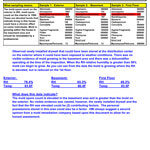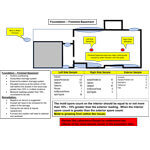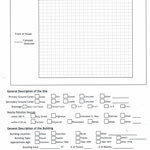- Air Quality with air-o-cell cassette
- Tape Sample
- Swab
- Carpet – Furniture Vacuum
- Ermi Mold Testing
- Examine the house & components for mold issues
- Crawl space, Basement, Attic, Interior
- Write a report to identify the location & mold spores
- An assessment explains & detail the mold spores
QUESTIONS about Sampling; Assessment; Remediation!
How soon can the assessment be scheduled?
Do I need a Mold Sampling?
What is the cost of mold sampling?
What is the cost of a mold Assessment?
Do you need to have a mold assessment examination?
How long is the sampling & assessment?
How long to receive the results?
How long to receive the written reports?
Should a person attend?
Does Housebusters provide Remediation:
Does Housebusters provide Re – Testing after Remediation?
Call the Office and Rose will answer your questions!
West Virginia: 304 933-6422
Pennsylvania: 724 564-5700
When Is Mold A Problem?
When Is Mold a Problem?
Since man has been on this earth, he has lived with mold. Mold has always been found in man’s environment, in caves where man lived, in primitive structures, log cabins and probably even in the wagons that crossed America’s prairies.
Mold is not a problem unless you’re allergic or if toxic mold is present. Even if you’re allergic to mold, chances are that you are allergic to specific types of mold – and not all mold.
What Symptoms Indicate Mold May Be Present?
People allergic to mold typically have allergy, cold or flu-like symptoms that may linger for weeks or months. These symptoms include sneezing; cough or postnasal drip; itchy nose, throat or eyes; and a runny or stuffy nose. Mold allergies can also trigger asthma, resulting in wheezing, shortness of breath and even chest tightness.
Exposure to toxic mold will produce different symptoms. These symptoms include memory problems to chronic sinus infections, balance issues and even morning stiffness/joint pain.
Once mold is removed from their homes, people suffering from symptoms for mold allergies or toxic mold often see their symptoms mysteriously disappear.
What Is Toxic Mold?
Molds that are toxic produce toxins called mycotoxins. These toxins can be ingested through contaminated food or inhaled or absorbed by the skin. If left untreated for long periods, toxic mold can even cause death through a variety of diseases. According to some research, chronic exposure to mycotoxins can even cause cancer!
When Is a Mold Test Needed?
If you notice a musty smell when you enter your home after the doors and windows have been closed for several hours, you may want to have your home tested for mold. In many cases, a homeowner may have become so accustomed to the musty smell that he or she may no longer notice it. An experienced home inspector, though, will notice this musty smell immediately!
If you or members of your family experience any of the symptoms associated with mold allergies or toxic mold, you may want to have your home tested.
What Is a Mold Test?
A mold test consists of taking two or three air samples taken inside a home, compared to an air sample collected outside of the home — a “control” sample. As mold is present in the environment, comparing indoor air samples with an outside, control sample helps to determine if mold is growing inside the home or is simply making its way into a home from the outside air.
Once the samples are taken, they are sent to a certified laboratory, which will not only identify levels for both indoor and control samples, but will also identify the types and levels of mold found. High levels of certain molds may not be problematic unless a person living in the home has mold allergies.
Call Housebusters
You can trust Housebusters Inspection Services to perform accurate, through mold tests. We are not a mold remediation company, which means that we don’t have a financial interest in finding mold in your home.
Our only interest is helping you to accurately identify if mold is present, what levels are present and what types of mold are found.
Many health effects are caused by exposure to the interior environment of Water Damaged Buildings (WDB).
The complex mixture of contaminants present in the air and in the dust in WDB form a toxic chemical stew. There are so many possible sources of these toxic compounds found in WDB that can lead to the variety of symptoms caused by mold illness, no single compound can be identified as the sole cause of the inflammatory responses, or the illness, seen in affected patients. Since no one thing can be deemed as solely responsible for the sickness, the sole cause becomes the WDB itself.
Health Effects and Symptoms of Mold Exposure typically begin as a chronic issue and over time escalates into an acute issue that can be a medical issues for many years when not detected. When the HVAC system does not have proper air changes per each room, the air becomes dormant and stagnant. This allows mold to begin to grow from within the house.
Problems of water damage in buildings along with mold growth are on the rise. Often the damage and health hazards are completely concealed. When water damage or mold does become apparent on surfaces or through musty smells, the problems has often been present for a long time. Some mold species can also invade the human body, causing a multitude of health symptoms that are often associated with many common diseases or conditions. If mold spores are visible, what you see might just be a small example of what lurks hidden elsewhere.
Stachybotrys chartarum and Aspergillus/Penicillium, are just two of the most common building-related molds that can cause serious health issues. All mold fungi break down organic material, as a part of decomposition. This recycling is a good thing for soil. However, in human bodies, mold fungus can deplete the immune system, thus supporting and accelerating many diseases. This article focuses on the most common symptoms associated with mold exposure and mold illness, as well as solutions we can use to protect ourselves.
The most common symptoms of mold exposure listed by major health organizations including the EPA and CDC include:
- Headaches Allergies
- Breathing Difficulties Coughing
- Colds Flu-Like Symptoms
- Aching Muscles Sore Throat
- Nausea Vomiting
- Diarrhea Constipation
- Fever Sinus Congestion
- Runny Nose Sneezing
Since these symptoms are very similar to virus or bacterial infection symptoms, as well as the common flu, possible environmental causes are often overlooked. It is important to keep in mind that when one is exposed lar basis, the body can become hyper-sensitive and react everywhere, even though the cause may be from one particular location.
These are some more common symptoms of mold exposure which are often overlooked.
- Fatigue, Malaise Nosebleeds Eye and Vision Problems Earaches Dandruff Hair Loss
- Fatigue Hearing Loss
- Irritability Memory Loss
Learning Difficulties Brain Fog/ Focus Challenges Difficulty Speaking Seizures
- Skin Sores Rashes
- Sleep disorders Dizziness
- Light-headedness Vertigo
- Weight Loss Weight Gain
- Anger Rage
- Anxiety Drug abuse
- Headache Ringing in the Ears
Many diseases have been scientifically linked to mold exposure. Mold exposure compromises the immune system even more when other health challenges are a burden. These diseases include:
- Asthma Allergies
- Bleeding Lungs Dermatitis
- Weight Gain Weight Loss
- Anger, Rage Eczema
- Anxiety Bi-Polar Disorder
- Drug Abuse Addiction
- Chronic Fatigue Fibromyalgia
- Depression Alzheimer’s Disease
- Multiple Sclerosis Insomnia
- Neuropathy OCD
- Panic Disorder Paranoia
- Schizoid Syndrome Hives
- Kidney Failure Infections
- Death Heavy Metal Toxicity
- Lyme Disease ADD/ADHD
- Parkinson’s Disease Cancer Hormone Disruption Thyroid Disease
Can mold really contribute to all of these health challenges?
Once the immune system is compromised by mold fungus, additional damage by any number of toxins, bacteria or viruses can destroy our bodies, and affect even our brain. Mold commonly enters the body through breathing in spores. However, it can also enter through the skin and even the eyes. Once inside, mold can reproduce itself often using our own bodies, organs, tissues, and even our blood, for food.
More research is certainly needed, however, it is likely that mold fungus in the body creates irritation, which leads to inflammation. Once the body starts an inflammatory process, it often becomes a systemic condition. We must stop the cascading inflammatory process by eliminating mold exposure and then rebuilding the immune system. While more research is needed, it is very possible that mold and other toxins which affect air quality in buildings may even be a significant contributor to all immune disorders and immune system diseases.
INFLAMMATORY IMMUNE DISORDERS AND DISEASES
- Cancer Diabetes
- Rheumatoid Arthritis Heart Disease
- Bursitis Laryngitis
- Gingivitis Tendonitis
- Gastritis Celiac Disease
- Diverticulitis Sepsis & Inflammatory Bowel Disease
Unfortunately, few doctors or building professionals know or understand how environment and mold can impact health. There are tests for mold in blood and urine, though these tests are not well known. Thanks to the internet and many avenues of information sharing, more and the numbers of doctors who are becoming aware is growing. Many of the doctors and other health professionals who are educated on mold and toxins have been affected themselves. They have been frustrated by the lack of information and often this frustration becomes the source of their energy to research to protect their own families or their own health.
Antibiotics are the typical solutions many doctors have come to rely on regardless of symptoms. However, mold fungus is not a typical bacteria or a bacteria at all. In fact, fungus are their own species of living organism that can adapt to antibiotics. Steroids are often prescribed to counter inflammation without considering the cause of the inflammation to eliminate the source. Steroid use for mold exposure patients can have devastating results, as the steroids depress the body’s natural immune system even further. Imagine, noticing that your car’s engine light is on. Would you go to a dealership to have them cut the wire to the engine light so you don’t see the warning? Or do we try to get to the root cause of the engine light alert to avoid further damage to theengine or other systems. Why has conventional medicine become focused on eliminating symptoms without evaluating causes?
Both antibiotics and steroids depress the immune system, making the body less able to fight off mold fungus invasions, or other bacteria including Lyme bacteria, which is a disease commonly associated with mold exposure. With a depressed immune system, other health challenges get worse and worse, and can adversely affecting more systems of the body. And the stronger the antibiotics, and the longer you have to be on them, the worse the side effects. Antibiotics and steroids make health effects from mold exposure worse, not better.



